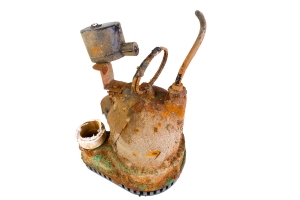HOW DO SUMP PUMPS WORK?
HOW DO SUMP PUMPS WORK?
 If you are concerned about your basement waterproofing, you may want to consider a sump pump installation for your home. When you schedule a sump pump installation near Baltimore, you can rest assured that your basement is protected against the dangers of flooding. Sump pumps work by transferring water safely out of your basement or crawlspace area. With regular sump pump maintenance from a company specializing in basement waterproofing near you, you will go a long ways towards preventing the hassles and hazards that are associated with a flooded basement. Read on for more information about how sump pumps work.
If you are concerned about your basement waterproofing, you may want to consider a sump pump installation for your home. When you schedule a sump pump installation near Baltimore, you can rest assured that your basement is protected against the dangers of flooding. Sump pumps work by transferring water safely out of your basement or crawlspace area. With regular sump pump maintenance from a company specializing in basement waterproofing near you, you will go a long ways towards preventing the hassles and hazards that are associated with a flooded basement. Read on for more information about how sump pumps work.
Sensor Activation
In order to pump water out of your basement, a sump pump is activated by pressurized sensors. When your sump pump is installed, it will be placed in a specially dug hole that is known as a sump pit. In the event that your basement begins to flood, pressure from the water will automatically cause the sump pump to switch on. This automatic activation ensures that the water level in your basement never gets to high.
Centrifugal Pumping
One of the primary principles behind a sump pump is the action of centrifugal force. Centrifugal force is a term that is used to describe the pressure that is created when liquid spins at a quick rate. Once the sump pump is turned on, it will start to spin, creating a powerful centrifuge. This action is what delivers the flow of water through your pipes and out of your basement.
Sump Pump Styles
As you are considering a sump pump installation, you will have several styles of sump pumps to choose from. Submersible sump pumps are placed at the very bottom of the sump pit when they are installed. By contrast, a pedestal pump sits on a platform that is raised above the lowest level of the pit. Both types of sump pumps are effective for preventing basement flooding problems in your home.
